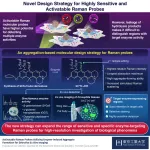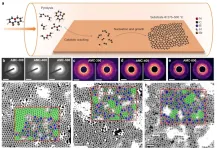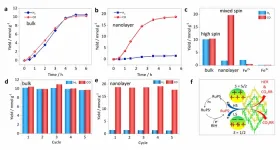Research shows that given the difficulties in navigating social relationships, children with more autistic traits might be prone to less attuned self-conscious emotions after transgression (displaying less guilt and embarrassment and more shame). A new study released in Child Development by researchers at Vrije Universiteit and the University of Amsterdam investigated for the first time the association between autistic traits and self-conscious emotions of guilt, embarrassment, and shame in young children.
Researchers also further examined whether children with more autistic traits experience these non-attuned self-conscious emotions due to lower levels of Theory of Mind (i.e., ability to understand and reason about people’s mental states, including beliefs), which was not the case. The findings provided initial evidence that children with more autistic traits do not show less guilt and embarrassment, but they show increased shame-like avoidance), which could hinder their reparation of social relationships after transgressions.
The Society for Research in Child Development (SRCD) had the opportunity to chat with lead author Shanna van Trigt about this important research.
SRCD: In your opinion, why is this the first time the association between autistic traits and self-conscious emotions were investigated?
van Trigt: The association between autistic traits and self-conscious emotions has been investigated in older children and adolescents. However, this is the first time these associations were investigated in early childhood. One reason may be that, traditionally, it has been assumed that self-conscious emotions develop only later in childhood. However, more recent research shows that very young children can display rudimentary forms of self-conscious emotions, too. Another reason may be that although research on emotions is rapidly growing, most of this research examines the so-called basic emotions and much less is known about more complex self-conscious emotions.
SRCD: Describe your hypothesis.
van Trigt: We hypothesized that young children with more autistic traits would show less guilt, less embarrassment, and more shame-like avoidance after accidentally harming another person (i.e., breaking their “favorite” toy), and that these associations would be partially explained by lower Theory of Mind.
SRCD: Your work showed that children with more autistic traits have lower Theory of Mind and show more shame-like avoidance after a transgression in early childhood. Expand on why this is important.
van Trigt: Shame is known to hinder the repairment of social relationships after a transgression, making it difficult for children with higher levels of autistic traits to engage with others and feel socially connected after transgressions. It is important to note that although autistic traits were related to lower Theory of Mind, this did not explain the higher levels of shame-like avoidance after transgression in our study. Children with more autistic traits seem not to show any deficits in the Theory of Mind ability that matters most for the experience of self-conscious emotions-the understanding of emotions. They show lower understanding of others’ (false) beliefs, which, importantly, did not seem to play a role in the experience of self-conscious emotions. This is why we think that the social skills training focusing on enhancing socio-cognitive skills in autism may not necessarily bring about improvements in emotional experiences and wellbeing.
SRCD: What are some implications of your research for early interventions for children with autistic traits?
Van Trigt: Our results imply that deficits in Theory of Mind, although related to more autistic traits, may not predict less attuned self-conscious emotions, at least not yet in early childhood. Previous intervention studies found that interventions for autism that focus on Theory of Mind and related socio-cognitive skills, improve socio-cognitive skills, but fail to result in wider improvements in real-life social behavior. As Theory of Mind skills do not necessarily relate to non-attuned self-conscious emotions that children with high levels of autistic traits may experience in a wide range of social situations, support efforts focusing on the regulation of self-conscious emotions may need to focus on targeting these emotions directly. For example, in the case of frequent and intense shame experiences, enhancing (self-) compassion with mindfulness interventions may be a useful option helping young children with high levels of autistic traits to regulate these emotions, thereby increasing their wellbeing and the quality of relationships with others.
SRCD: What were the limitations in your research?
van Trigt: Our study has several limitations that warrant attention when interpreting our results. First, we had a community sample of children, and we measured autistic traits with parents’ reports. Future studies may involve young children on the autism spectrum to investigate whether autism may be related to non-attuned self-conscious emotions, too. Our families came from the Netherlands – a Western country and parents were relatively highly educated. This prevents us from generalizing our results to different cultures and to families with lower socio-economic status. Also, our study was cross-sectional, which does not allow drawing any causal conclusions, for example, our mediation analyses to assess the role of Theory of Mind do not prove temporal ordering or causality. Longitudinal studies may be useful in the future to uncover bidirectional effects between autistic traits and self-conscious emotions over time.
SRCD: What are your recommendations on future work in this area?
van Trigt: Future studies may build on our findings by inspecting the development of self-conscious emotions in children with more autistic traits from early to late childhood in a longitudinal study. Moreover, mechanisms explaining the relationship between autistic traits and self-conscious emotions other than Theory of Mind can be investigated. For example, communication deficits or elevated levels of social anxiety may play a role in less attuned self-conscious emotions in children with more autistic traits. Also, investigating these associations in young children on the autism spectrum can tell us if our findings translate to autism as well.
SRCD: If you could offer one quote or takeaway about the research, what might that be?
van Trigt: Children with more autistic traits may show disturbances in some, but not all, self-conscious emotions after transgression, which could hinder their social engagement and the feeling of connection to others. Therefore, new support strategies to regulate self-conscious emotions through enhancing (self-)compassion, such as mindfulness interventions, may be considered when targeting young children with more autistic traits.
###
This work was funded by the Research Institute of Child Development and Education, University of Amsterdam and grants from the Jacobs Foundation and the Dutch Research Council.
Summarized from Child Development, Autistic Traits and Self-Conscious Emotions in Early Childhood by van Trigt, S. (Vrije Universiteit), Colonnesi, C., Brummelman, E., Jorgensen, T.D., and Nikolić, M. (University of Amsterdam). Copyright 2023 The Society for Research in Child Development, Inc. All rights reserved.
END






